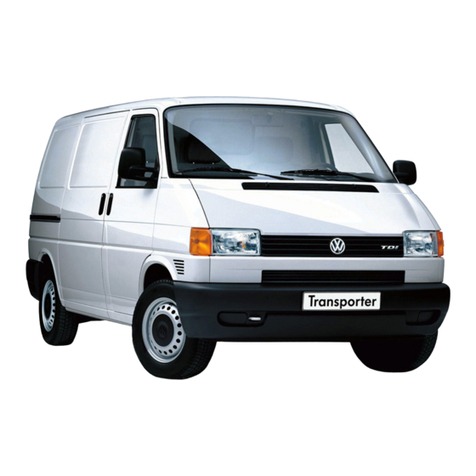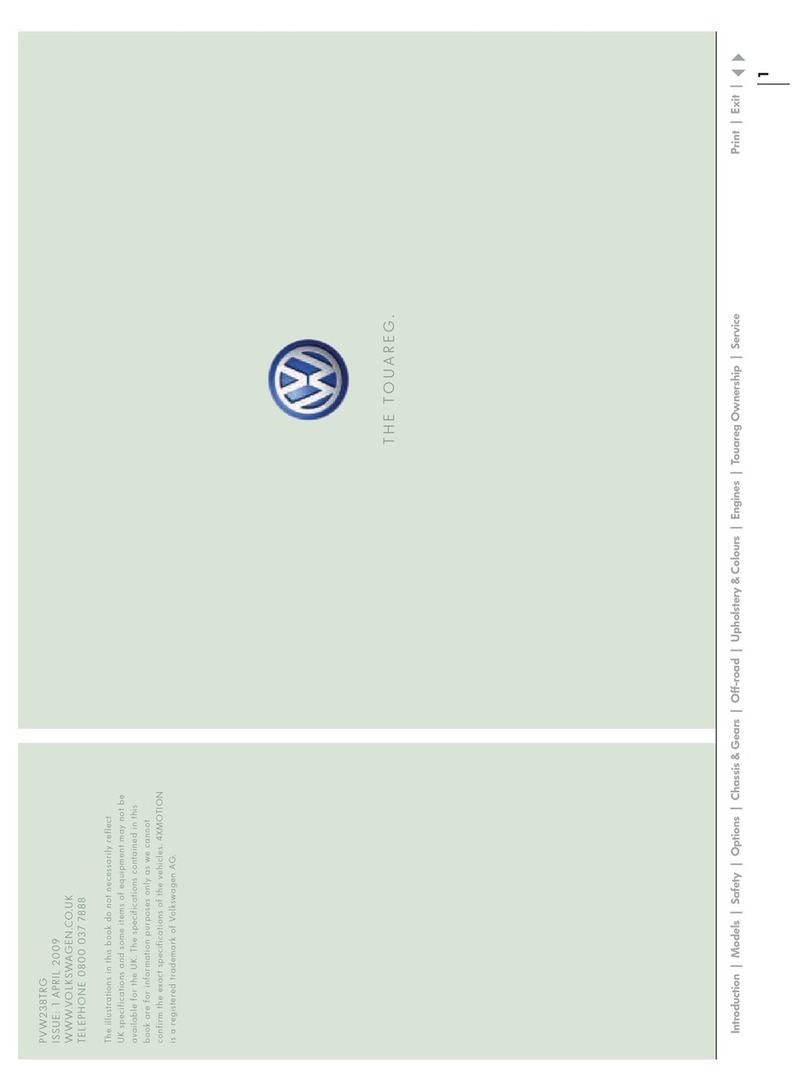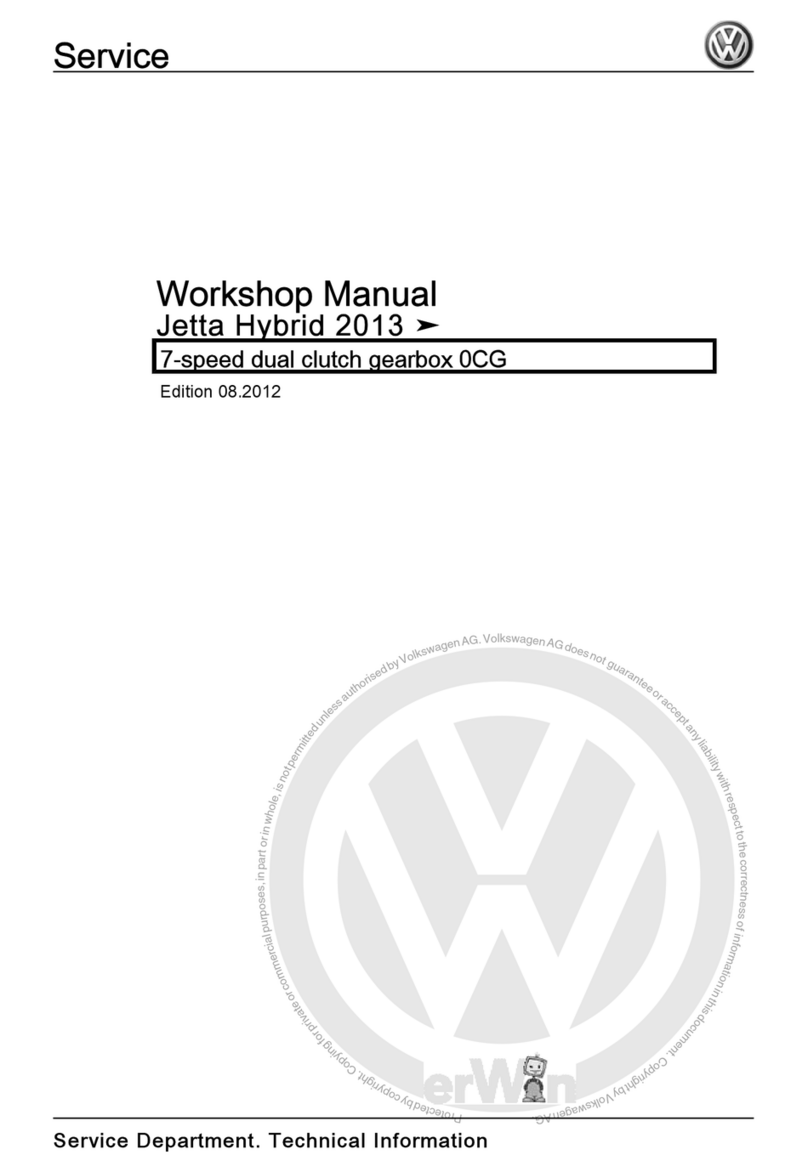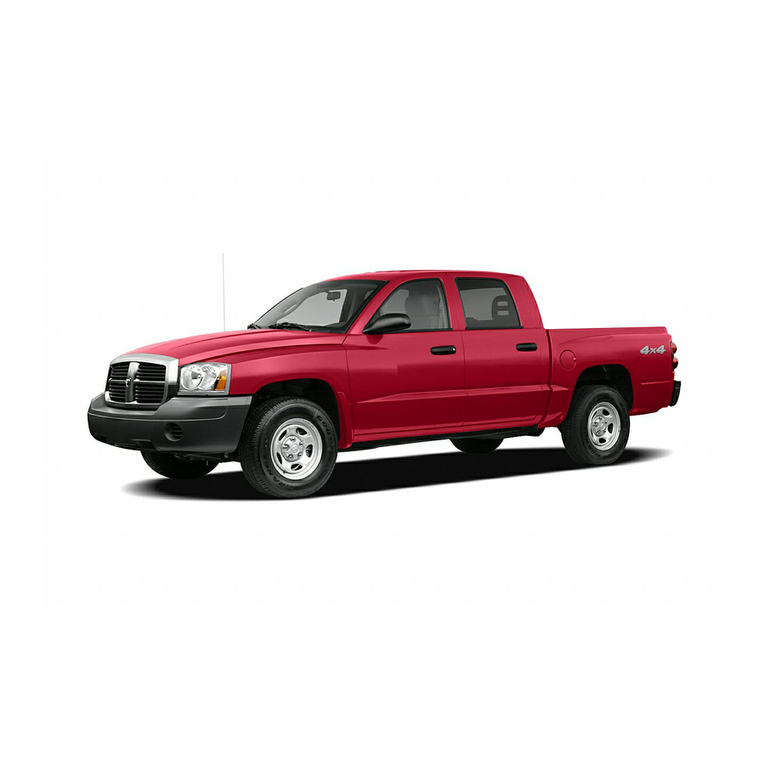Before using your vehicle for the first time, please read and observe the information in this
owner's manual. It will quickly help you to become familiar with your vehicle and all of its
functions as well as making you aware of dangers to yourself and others and of how these
dangers can be avoided.
If you have any further questions about your vehicle, or if you think that the vehicle wallet has not
covered everything, please get in touch with your Volkswagen dealership. They will always be
happy to deal with your questions, suggestions or problems.
We hope you enjoy driving your new vehicle. Happy motoring.
Volkswagen AG
• This owner's manual is valid for all models and versions of the Tiguan.
• An alphabetical index is included at the end of this manual.
• A list of abbreviations at the end of the manual explains the abbreviations used.
•Directions and positions such as left, right, front and rear are normally relative to the vehicle's
direction of travel, unless otherwise indicated.
•Illustrations help with orientation and should be regarded as a general guide.
• This owner's manual was written for left-hand drive vehicles. In right-hand drive vehicles the
controls may sometimes be different to those displayed in illustrations or described in the text
⇒
Overviewofdriverside .
•Values given in miles instead of kilometres or mph instead of km/h refer to the country-specific
instrument clusters or Infotainment systems.
•Short definitions appear in a different colour before some sections of this manual. They provide
a summary of the function and use of a system or feature. More detailed information about the
features, conditions and limitations of systems and equipment can be found in the relevant
sections.
• Any technical changes that may be made to the vehicle after publication of this booklet are
contained in a supplement that is included with the vehicle wallet.
All equipment and models are described without indicating whether the equipment is optional or
specific to the model type. This means that your vehicle may not have some of the equipment
described, or it may only be available in certain markets. The scope of equipment fitted in your
vehicle can be found in the sales documentation and you can contact your Volkswagen dealership
for further information.
All data in this owner's manual correspond to the information available at the time of going to print.
Because the vehicle is constantly being developed and further improved, there may be differences
between your vehicle and the data in this owner's manual. No discrepancy in data, illustrations or
descriptions shall form the basis for any legal claim.
Please ensure that the complete vehicle wallet is always in the vehicle if you lend or sell the vehicle
to someone else.
Standard booklets in the vehicle wallet:
• Owner's manual
Additional booklets in the vehicle wallet (optional):
• Supplements
• Infotainment system
•Othersupplements
Refers to a section within a chapter that contains important information and safety
notes that should always be observed.
Indicates that the section is continued on the next page.
Indicates the end of a section.
Indicates situations in which the vehicle must be stopped as quickly as possible.
®The symbol indicates a registered trademark. However, the absence of this symbol
does not constitute a waiver of the rights concerning any term.
⇒
Symbols like these refer you to warnings within the same section or on a given
page. They draw your attention to possible risks of accident or injury and explain
how they can be avoided.
⇒
Cross reference to potential risks of damage to property in the same section or on
the page specified.
About this owner's manual
About this owner's manual



















































